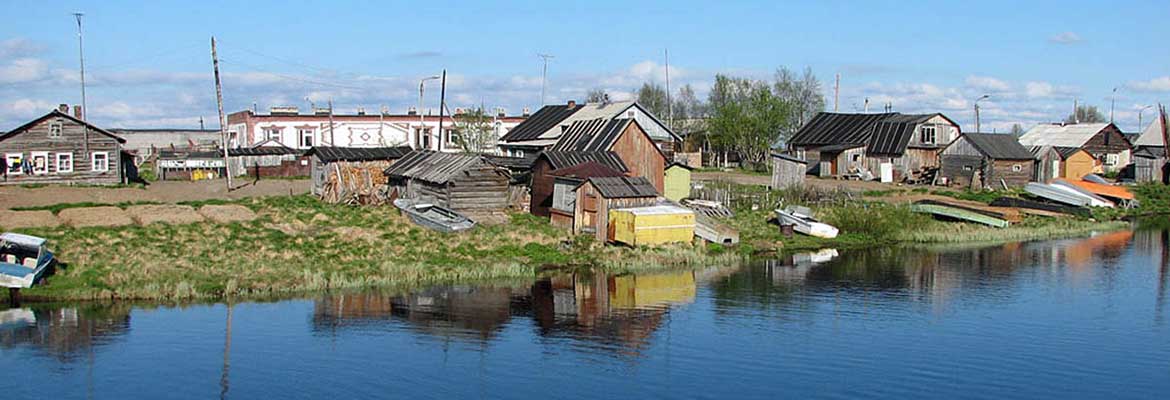
Welcome to Teriberka
The resurrection of a glorious town of the fifties
Teriberka is a village in Murmansk Region on the Kola Peninsula and located on the Barents Sea coast,
at the mouth of the Teriberka River. Teriberka is a quite old village as it was first mentioned in 1523,
inhabited by Pomors (fishing Saami).
In the 1860s Teriberka was founded; the decade when the Murmansk coast was actively being settled.
By the end of 19th century, Teriberka was well-developed: having a church, a lighthouse,
and a weather station (the first one on the Murmansk coast and which is still visible).
In the beginning of the 20th century, Teriberka had a well-developed cod and shark fishing business
(undertaken mostly by the Norwegians who owned a factory and a store).
By the end of the 1920s, the first collective farm was organized in Teriberka village;
it included a dairy farm and a reindeer herd in addition to the fishing boats.
Teriberka developed quickly after the war. In the period from the 1940s until the 1960s,
Teriberka counted two fishing farms, two dairy farms, a poultry farm, a 2000-head reindeer herd,
an American mink breeding farm, and two fish processing facilities, a shipyard as well as shops and warehouses.
Repair facilities of the shipyard were working at their full capacity and were being expanded.
Teriberka was growing in size and amount of inhabitants. Teriberka had a stadium, a community center, workers' clubs,
a Young Pioneers club, two schools (elementary and secondary), a boarding school for children for the other
coastal settlements, two hospitals and an ambulance station.
The population of Teriberka counted 4800 inhabitants in the 1950s.
Teriberka became even the administrative center of the district.
In the 1960s, the downfall of Teriberka began, when the district was transferred to the jurisdiction
of the town of Severomorsk. As ship tonnage increased and fishing fleets were able to travel more easily in the open ocean,
the coastal fishing business became less important. A newly constructed fish processing complex in Murmansk
brought smaller processing facilities like in Teriberka out of business.
Also the collective farm "Murmanets" was abolished along with its mink farm,
the reindeer herd was transferred to the village of Lovozero, and the fish processing plant was shut down
because large fishing vessels were not able to enter the river from the ocean.
In the 1980s, the construction of the two hydroelectric plants destroyed the Salmon migration in the Teriberka river.
In the 2000s, Teriberka was again subordinated to the district under Severomorsk town.
Nowadays approximate 1000 inhabitants are living in Teriberka.
In 2010s, Teriberka had high hopes for more jobs due to the Stockman gas field, before it was postponed indefinitely.
In 2015 and with thanks to the drama movie "Leviathan" from producer Alexei Zvyagintsev,
Teriberka village became more known in Russia and also abroad.
The filming of exterior scenes for “Leviathan” took place in Teriberka village and on the Barents Sea coast there.
In 2014, Alexei Zvyagintsev took part in the Cannes Film Festival.
He won an Award for the Best Screenplay and was nominated for the Golden Palm.
Since then more and more tourists visit Teriberka attracted by the scenery of the nature and to find the screenshots of the movie.
Now Teriberka hopes to develop Tourism based on the Barents Sea and the Pomor culture.





























 TripAdvisor
TripAdvisor
